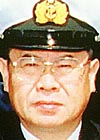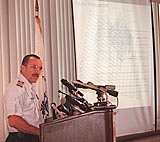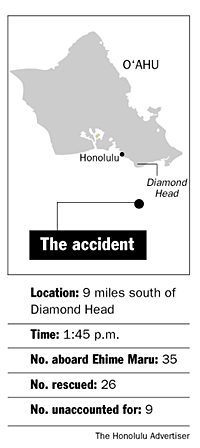 NTSB reviewing sub's reliance on 'passive sonar' NTSB reviewing sub's reliance on 'passive sonar'
 Missing students hoped to carry on tradition Missing students hoped to carry on tradition
 Probe to re-examine where subs should train Probe to re-examine where subs should train
 Coast Guard rescue timeline Coast Guard rescue timeline
 Previous stories Previous stories
By Tanya Bricking
Advertiser Staff Writer
It was supposed to be his last voyage for a happy reason. Sixty-year-old Hirotaka Segawa was going to retire when he returned home.
 |
| Hirotaka Segawa never made it to the life raft. |
Instead, on his final day before the trip back to Japan, a loud boom and jarring vibration sent him running for safety as water flooded the 174-foot, four-deck fishing vessel, which quickly sank in 1,800-foot waters after being rammed by a U.S. Navy submarine.
The electricity had gone out on impact, and it was impossible for Segawa, a communications crewman, to radio for help. So he donned a life jacket and went to the spot where they had agreed to gather in an emergency. But he never made it to a life raft with the 26 others who escaped and was swept out to sea.
He and at least one other person who had gathered in the emergency area are still unaccounted for. They are among the nine missing from the Ehime Maru, a training vessel from Uwajima Fisheries High School. Most of the 35 people on board were relaxing in the mess hall after lunch Friday when the ship was struck by a 360-foot nuclear submarine that weighed more than 6,000 tons.
Akira Kagajyo was luckier. Kagajyo, who was in charge of the fishing vessel’s engine, was on the bottom deck when the submarine struck. He rushed to the top deck, where the ship’s movements bashed him into a steel light pole. The force broke his right collarbone, the worst injury of anyone who made it to shore. But he survived.
Others hung on to railings, paralyzed with fear and unsure whether to jump into a deep ocean and battle 6- to 8-foot swells or continue gripping a sinking ship.
"Some of them, when told to escape, couldn’t even let go of what they were holding on to," said Ietaka Horita, the fishing school’s principal, who recounted yesterday what he had heard from survivors.
Horita was one of the first to arrive in Honolulu over the weekend from a fishing village on Japan’s southern island of Shikoku. The more he heard about what happened, the deeper the reality hit that four of his 17-year-old students, two of his teachers and three crewmen were lost.
By last night, Horita had little hope of finding any more survivors.
"We know that two of them were at the emergency gathering spot," he said. "There may be others who are stuck in the ship. I think that the damage to the ship was done in all the decks and it sank from below. And that’s why the ship never turned upside down. As it went down, everybody was thrown out."
 |
| Coast Guard Capt. Steven Newell briefed the media yesterday on the progress of the search for the four missing students, two teachers and three crew members of the Ehime Maru. On the screen to the right, Newell shows the area that was being searched.
Eugene Tanner • The Honolulu Advertiser |
As search-and-rescue efforts continued yesterday, Horita concentrated on comforting the survivors.
"Both students and crew are shaken," he said. "I think it will take three or four days for them to open up. When I asked them how they were, they said they were relieved to see us."
The Japanese government sent a doctor with Horita not only to provide physical treatment but to begin group counseling. So far, survivors seem to be suffering no psychological problems, he said.
The Japanese Foreign Ministry sent representatives to Honolulu who began the task yesterday of taking statements from survivors. The questioning is expected to continue today, Horita said, with information being gathered by the Japanese government and consulate before the United States takes more statements from those who were aboard the Ehime Maru.
"The main concern is getting information right now," Horita said. "The United States is dealing with this problem sincerely."
[back to top] |



